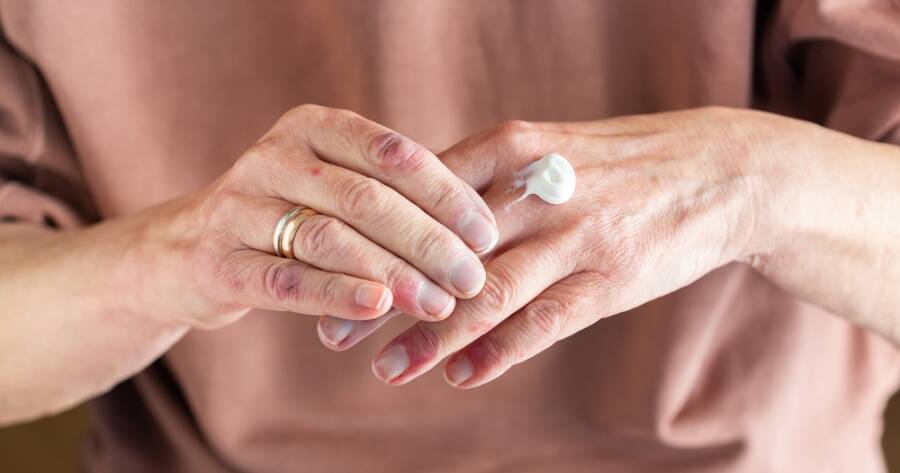Atopic dermatitis, often called eczema, is a common skin condition that affects people of all ages. It causes redness, itching, and discomfort that can interfere with daily life. Understanding its causes and symptoms is essential for finding the right treatments. With the right care, many people can manage atopic dermatitis effectively and improve their skin health.
What Is Atopic Dermatitis?
Atopic dermatitis is a chronic condition that makes the skin inflamed and itchy. It is most common in children but can occur at any age. The condition is part of the “atopic triad,” often linked with allergies, asthma, and hay fever. While it isn’t contagious, it can significantly impact a person’s quality of life due to its visible effects and persistent symptoms.
The condition typically appears on the hands, face, and behind the knees. However, it can develop anywhere on the body. It often flares up in cycles, with periods of intense irritation followed by calmer phases.
What Causes Atopic Dermatitis?
The exact cause of atopic dermatitis isn’t fully understood, but several factors can contribute. Genetics play a significant role, as the condition tends to run in families. If a parent or sibling has eczema, asthma, or allergies, the chances of developing atopic dermatitis increase.
Environmental triggers, such as allergens, irritants, or weather changes, can also worsen the condition. Dry air, harsh soaps, or even stress can cause a flare-up. Additionally, people with this condition often have a weaker skin barrier, making their skin more sensitive and prone to dryness.
A connection between the immune system and atopic dermatitis has also been observed. An overactive immune response to irritants can lead to inflammation, resulting in the redness and itching that characterize the condition.
Recognizing Symptoms of Atopic Dermatitis
Symptoms of atopic dermatitis can vary from mild to severe, but some common signs include:
- Intense itching: Often the first and most persistent symptom, itching can be worse at night.
- Red, inflamed skin: Patches of skin may appear red or brownish, often becoming swollen.
- Dry, cracked skin: The skin can become dry to the point of cracking, especially during colder months.
- Thickened or scaly skin: Chronic scratching or irritation can lead to thicker patches of skin.
- Oozing or crusting: Severe cases may lead to fluid-filled bumps that ooze or crust over.
Recognizing these symptoms early can help in seeking effective treatment, which is crucial for managing the condition.
How Is Atopic Dermatitis Treated?
Effective treatments for atopic dermatitis often involve a combination of therapies tailored to individual needs. Moisturizing is a crucial step, as hydrating the skin with thick creams or ointments helps restore the skin’s barrier and prevents dryness.
Medicated creams, such as corticosteroids, are commonly prescribed to reduce inflammation during flare-ups, while non-steroidal options may be used for milder symptoms. Antihistamines can provide relief from itching, particularly at night, improving sleep quality.
Identifying and avoiding triggers, such as harsh soaps, allergens, or specific fabrics, is another essential aspect of managing the condition. In severe cases, phototherapy, which involves controlled exposure to ultraviolet light, can help by calming the immune system.
For individuals with persistent symptoms, a dermatologist may recommend advanced treatments, including biologic injections or immunosuppressant medications, to achieve better control of the condition.
Lifestyle Changes That Can Help
In addition to medical treatments, certain lifestyle changes can help manage atopic dermatitis effectively:
- Choose gentle products: Use fragrance-free soaps and laundry detergents to avoid irritation.
- Wear soft fabrics: Cotton clothing is less likely to irritate the skin compared to wool or synthetic materials.
- Manage stress: Stress can worsen symptoms, so practices like yoga or meditation may help.
- Maintain a healthy diet: While no specific diet cures eczema, reducing inflammatory foods and staying hydrated may support overall skin health.
Making these changes can complement medical treatments and improve long-term outcomes.
Finding Relief and Improving Quality of Life
Atopic dermatitis can be challenging, but effective treatments and lifestyle adjustments make it manageable for most people. Early intervention is key to preventing the condition from worsening. Working with a dermatologist to create a personalized care plan can provide long-term relief.
Understanding what triggers your symptoms and taking steps to reduce them can lead to healthier, more comfortable skin. With the right approach, you can regain control and minimize the condition’s impact on your daily life.
